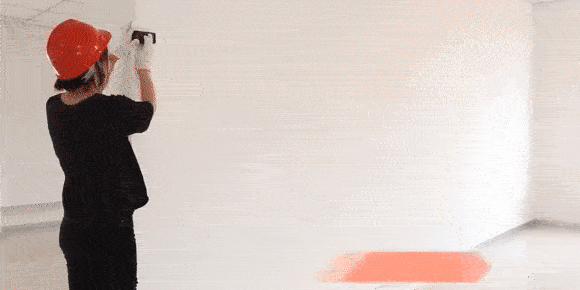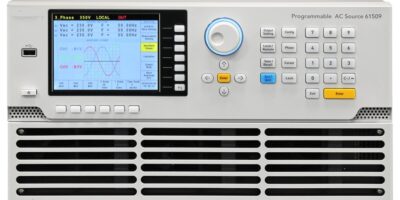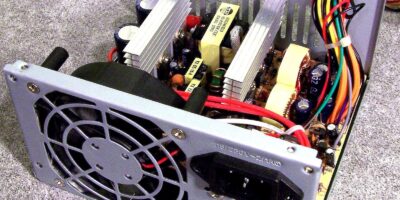The global Laser Distance Meter market is projected to grow from USD 1566.9 million in 2023 to USD 1,872.92 million by 2033, at a CAGR of 1.8% during the forecast period 2024-2033.
The world thrives on precise measurements. From constructing towering skyscrapers to meticulously crafting furniture, accuracy is paramount. In this realm of precision, laser distance meters have emerged as an indispensable tool, revolutionizing the way we measure distances. This comprehensive report delves into the ever-expanding Laser Distance Meter Market, meticulously dissecting its current landscape, growth drivers, challenges, and exciting future prospects.
Gone are the days of cumbersome tape measures and inaccurate estimations. Laser distance meters, employing the power of light, offer a swift and precise solution for measuring distances. These compact devices emit a laser beam that bounces off a target, and the time it takes for the beam to return is calculated to determine the distance.
This report explores the various types of laser distance meters available:
- Basic Models: These offer core functionality – distance measurement – at an affordable price point.
- Advanced Models: Packed with additional features like area and volume calculation, Bluetooth connectivity for data transfer, and even Pythagoras functions for indirect measurements, these cater to professionals seeking a comprehensive solution.
The applications of laser distance meters are as diverse as the tasks they tackle. Here’s a glimpse into their widespread use:
- Construction and Renovation: From measuring room dimensions to calculating material requirements, laser distance meters are a mainstay for contractors, architects, and engineers.
- Surveying and Mapping: These tools ensure precise land measurements, crucial for creating accurate maps and geographical data.
- Interior Design and Space Planning: Laser distance meters empower designers to meticulously plan furniture placement and ensure optimal use of space.
- DIY Home Improvement Projects: Whether hanging shelves or installing cabinets, these devices provide homeowners with the confidence of accurate measurements.
- Event Planning and Stage Management: Laser distance meters ensure precise placement of equipment and stage elements.
A brief historical perspective reveals the evolution of the laser distance meter market. From their initial introduction in the late 20th century, these devices have undergone continuous advancements, becoming smaller, more user-friendly, and packed with advanced features.
Market Restraints: Navigating the Challenges (800 words)
While the Laser Distance Meter Market enjoys a bright future, some challenges need to be addressed:
-
Price Sensitivity: Advanced models with comprehensive features can be cost-prohibitive for some consumers, particularly DIY users with occasional needs.
-
Competition from Traditional Tools: Traditional measuring tapes still hold a place in the market, especially for simple tasks or for those on a tight budget.
-
Limited Awareness in Certain Regions: In developing economies, awareness about the benefits and functionalities of laser distance meters might be limited, hindering their widespread adoption.
-
Potential Safety Concerns: Laser beams, although typically low-powered, can pose safety concerns if not used appropriately. Educating users about safe operation and adhering to regulations are crucial.
Market Opportunities and Challenges
The Laser Distance Meter Market presents exciting opportunities for growth:
-
Expansion into New Application Areas: The potential for laser distance meters extends beyond traditional applications. Exploring their use in environmental monitoring, agriculture, and even security applications can unlock new markets.
-
Development of More User-Friendly and Cost-Effective Models: Catering to budget-conscious consumers by developing basic models with essential features at competitive prices can broaden the market reach.
-
Integration with Emerging Technologies: As discussed earlier, integrating AR and IoT with laser distance meters offers a glimpse into the future and fosters innovation.
-
Growing Demand from Developing Economies: Rising disposable income and increasing awareness in developing economies present significant growth opportunities.
Receive the FREE Sample Report of Laser Distance Meter Market Research Insights @ https://stringentdatalytics.com/sample-request/laser-distance-meter-market/13147/
Market Segmentations:
Global Laser Distance Meter Market: By Company
• Robert Bosch Tool
• Fluke
• Flir Systems
• Leica Geosystems
• Hilti
• Makita
• Stabila
• Stanley Black & Decker
• Trimble
Global Laser Distance Meter Market: By Type
• Max Range Below 30 Meters
• Max Range 30 – 100 Meters
• Max Range Above 100 Meters
Global Laser Distance Meter Market: By Application
• Military
• Building and Construction
• Oil and Gas Industry
• Metal and Mining Industry
• OthersRegional Analysis of Global Laser Distance Meter Market
All the regional segmentation has been studied based on recent and future trends, and the market is forecasted throughout the prediction period. The countries covered in the regional analysis of the Global Laser Distance Meter market report are U.S., Canada, and Mexico in North America, Germany, France, U.K., Russia, Italy, Spain, Turkey, Netherlands, Switzerland, Belgium, and Rest of Europe in Europe, Singapore, Malaysia, Australia, Thailand, Indonesia, Philippines, China, Japan, India, South Korea, Rest of Asia-Pacific (APAC) in the Asia-Pacific (APAC), Saudi Arabia, U.A.E, South Africa, Egypt, Israel, Rest of Middle East and Africa (MEA) as a part of Middle East and Africa (MEA), and Argentina, Brazil, and Rest of South America as part of South America.
Click to Purchase Laser Distance Meter Market Research Report @ https://stringentdatalytics.com/purchase/laser-distance-meter-market/13147/
Challenges to Consider:
-
Intense Competition: The market is witnessing an influx of new entrants, alongside established brands vying for market share. Maintaining a competitive edge through innovation and strategic marketing will be essential.
-
Fluctuation in Raw Material Prices: The cost of manufacturing laser distance meters can be impacted by fluctuations in raw material prices. Employing efficient production processes and optimizing supply chains can mitigate this challenge.
-
Counterfeit Products: The presence of counterfeit products can damage brand reputation and erode market share. Implementing strong quality control measures and consumer education initiatives are crucial.
-
Need for Stricter Regulations and Safety Standards: Ensuring the safety of users by advocating for and adhering to stricter regulations regarding laser technology is paramount.
Market Growth Drivers: Lighting the Way for Expansion
-
Rising Demand from Construction and Renovation Projects: The construction industry is a cornerstone for the Laser Distance Meter Market. Precise measurements are vital for architects, engineers, and contractors to ensure structural integrity, efficient material use, and accurate project completion. Laser distance meters offer unmatched speed and accuracy compared to traditional tape measures, making them an indispensable tool on construction sites and during renovations.
-
Increasing Need for Accuracy Across Industries: The demand for precise measurements extends beyond construction. Interior designers rely on laser distance meters to meticulously plan furniture placement and optimize space utilization. Surveying and mapping professionals require accurate land measurements to create reliable geographical data. Even event planners and stage managers utilize these tools for precise equipment placement, ensuring a flawless execution. As the need for accuracy becomes paramount across various industries, the adoption of laser distance meters is on the rise.
-
Rising Popularity of DIY Home Improvement Projects: The DIY (Do-It-Yourself) movement is experiencing a surge in popularity. Homeowners are increasingly tackling renovation projects, furniture assembly, and other tasks that require accurate measurements. Laser distance meters provide a user-friendly and reliable alternative to traditional tools, empowering DIY enthusiasts to confidently undertake home improvement ventures.
-
Technological Advancements: A Catalyst for Innovation: The laser distance meter market is constantly evolving, fueled by advancements in technology. Here’s a closer look at some key innovations driving growth:
-
Enhanced Range: Newer models boast extended measurement capabilities, enabling users to tackle larger spaces with ease. This caters to professionals working on expansive construction sites or vast outdoor areas.
-
Improved Functionalities: Advanced features are adding significant value to laser distance meters. Area and volume calculation functions streamline tasks for contractors and designers. Pythagoras functions enable indirect measurements, while angulation capabilities allow for slope measurement, proving crucial for various applications.
-
Mobile App Integration: The ability to seamlessly connect laser distance meters with mobile apps unlocks new possibilities. Data can be stored and analyzed on smartphones or tablets, facilitating project collaboration and real-time progress tracking.
-
Improved User Interface and Ergonomics: Manufacturers are prioritizing user experience. Intuitive interfaces, user-friendly controls, and compact designs are making laser distance meters more accessible and user-friendly for a broader audience.
-
-
Integration with Emerging Technologies: A Glimpse into the Future: The future of the Laser Distance Meter Market is intertwined with cutting-edge technologies:
-
Augmented Reality (AR): Imagine virtually visualizing furniture placement in a room before purchase, or overlaying building plans onto a real-world environment for construction projects. AR integration with laser distance meters holds immense potential for enhanced visualization and spatial awareness, further increasing their appeal.
-
Internet of Things (IoT): By connecting laser distance meters to the IoT network, data can be automatically collected and analyzed in real-time. This can enable real-time monitoring of progress on construction sites, facilitate preventative maintenance tasks in industrial settings, or even empower remote collaboration on projects.
-
About Stringent Datalytics
Stringent Datalytics offers both custom and syndicated market research reports. Custom market research reports are tailored to a specific client’s needs and requirements. These reports provide unique insights into a particular industry or market segment and can help businesses make informed decisions about their strategies and operations.
Syndicated market research reports, on the other hand, are pre-existing reports that are available for purchase by multiple clients. These reports are often produced on a regular basis, such as annually or quarterly, and cover a broad range of industries and market segments. Syndicated reports provide clients with insights into industry trends, market sizes, and competitive landscapes. By offering both custom and syndicated reports, Stringent Datalytics can provide clients with a range of market research solutions that can be customized to their specific needs.
Reach US
Stringent Datalytics
+1 346 666 6655
Social Channels:
Linkedin | Facebook | Twitter | YouTube




Leave a Reply